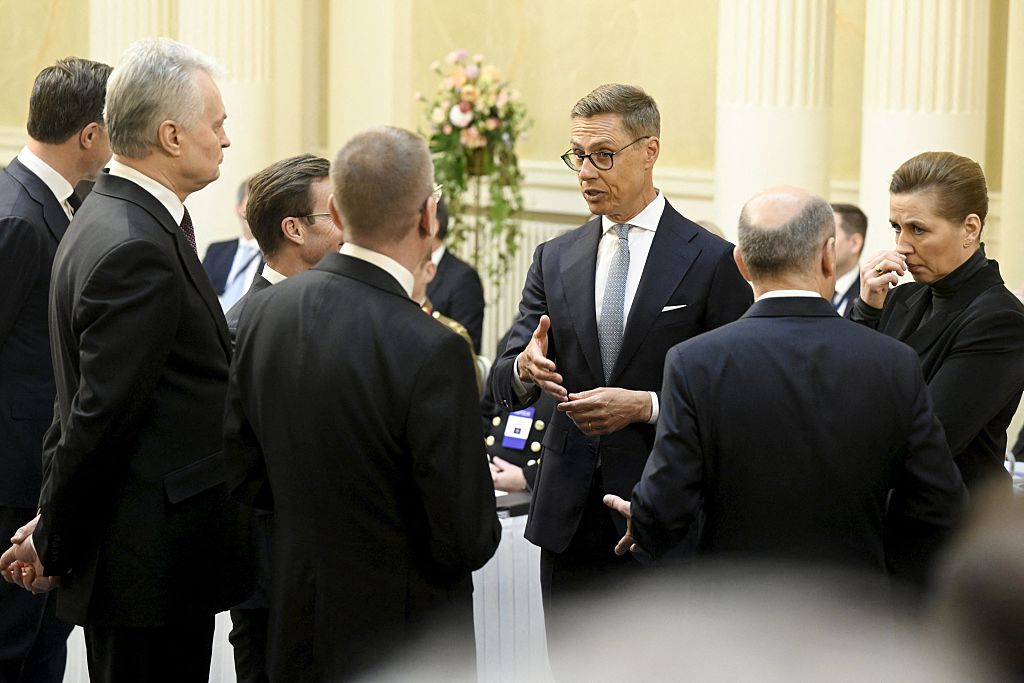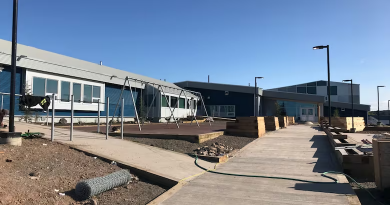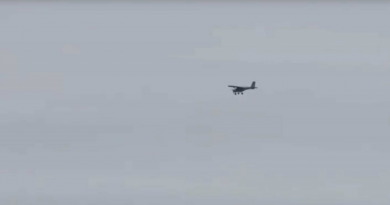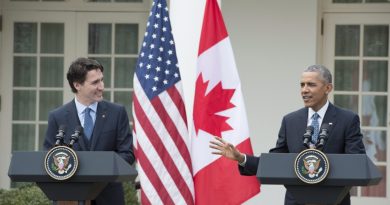Finland and Lithuania set to produce anti-personnel mines, officials say

By Andrius Sytas and Anne Kauranen
Lithuania and Finland look set to start domestic production of anti-personnel landmines next year to supply themselves and Ukraine because of what they see as the military threat from Russia, officials from the two NATO member states told Reuters.
The two countries, which border Russia, have announced their intention to pull out of the Ottawa Convention banning the use of such mines, and the officials said production could be launched once the six-month withdrawal process is completed.
Three other NATO and European Union states – Poland, Latvia and Estonia – are also quitting the treaty, citing rising security concerns about Russia because of its war in Ukraine.
Those three countries have not announced plans to start producing anti-personnel mines, but officials in Poland and Latvia have indicated they could start production quickly if needed and Estonia sees it as a possible option in the future.
Ukraine has also announced it is withdrawing from the 1997 Ottawa treaty, so that it can defend itself better against Russia, which is not a party to the treaty. Each side has accused the other of using anti-personnel mines during the war.
The moves in Finland and Lithuania towards starting production of such mines underline mounting concern in Europe that Russia’s military ambitions may go beyond Ukraine and follow pledges by NATO states to increase defense spending, in line with demands by U.S. President Donald Trump.
“We are going to spend hundreds of millions of euros on anti-tank mines, but also on anti-personnel mines. It will be a significant amount,” Lithuanian Deputy Defence Minister Karolis Aleksa told Reuters.
Tens of thousands of anti-personnel landmines, or more, will be ordered, he said.
“Our national industry will be one of the sources. Our industry can make these,” said Aleksa, whose country has a 274-km (170-mile) border with Russia and a 679-km border with Belarus, Russia’s close ally.
Once production is established, Lithuania will be in a position to supply others including Ukraine, said Vincas Jurgutis, head of Lithuania’s defense industry association.
Russia’s Defence Ministry did not respond to a request for comment by Reuters.
‘DUTY TO SUPPORT UKRAINE’
Finland has, at 1,340 km, a longer border with Russia than any other NATO state.
“Finland must, for security of supply, have its own (anti-landmines) production,” Finnish parliament defense committee chair Heikki Autto told Reuters. “They are a highly effective and very cost-efficient weapons system.”
Finland could also supply landmines to Ukraine, he said.
“It is not only right and our duty to support Ukraine, it is also important for Finland’s own security,” Autto said.
Helsinki had more than 1 million anti-personnel landmines before joining the Ottawa treaty in 2011, he said.
Finnish defense companies Nammo Lapua, Insta and Raikka told the parliamentary defense committee they would be interested in producing the mines. Another, Forcit Explosives, said it was ready to discuss possibilities with the military.
The companies declined comment to Reuters. The Finnish military was not immediately available for comment.
Asked about Finland quitting the Ottawa treaty, Russia’s ambassador to Helsinki said in April that the decision would create risks only for residents of Finland because its military planned to mine only Finnish territory.
SIX-MONTH PROCESS
Anti-personnel mines explode when triggered by contact, vibration or a tripwire, and can maim civilians as well as combatants. Many stay in the ground long after conflicts end.
Anti-mine campaigners have criticized the countries that are leaving the Ottawa Convention and say that reintroducing anti-personnel mine production could be expensive and take a long time to fully operational.
Asked whether Latvia would start producing anti-personnel mines, its defense ministry did not commit to starting such production but said: “The Latvian military industry has the necessary capabilities and the metalworking sector is highly advanced.”
Estonia has no immediate plans to purchase anti-personnel mines, Defence Minister Hanno Pevkur said. “For now, it’s an option in the back pocket,” he told Reuters.
PGZ S.A., Poland’s state-owned defense conglomerate, told Reuters it would be ready to produce millions of them if needed.
ZSP Niewiad├│w, a private Polish munitions manufacturer, has said it plans to restart large-scale production of the mines in 2027, and that it is investing in new facilities.
The five NATO countries that plan to quit the Ottawa treaty say they will not create minefields in peacetime but will store the mines for swift deployment if they feel threatened.
Poland has designated zones that could be mined within days if needed, as part of future military fortifications along the eastern frontier, between rows of reinforced concrete obstacles, a government source told Reuters.
The countries’ governments say any minefields must be marked, so that they can be cleared after a conflict. They regard such munitions as a deterrence.
“When we have them in storage, that is the best guarantee that they will never have to be used,” Autto said.
Related stories from around the North:
Canada: More soldiers, more money. Canada’s top soldier extols benefits of spending boost, CBC News
Denmark: Danish general says he is not losing sleep over US plans for Greenland, Reuters
Greenland: Europeans step up Arctic diplomacy amid U.S. and global pressure, Eye on the Arctic
Finland: Finland hails plan for allies to join NATO land forces in North, The Independent Barents Observer
Iceland: Iceland’s FM announces defence review, calls revamped security policy ‘urgent’, Eye on the Arctic
Norway: Deterrence Norway joins NATO’s Forward Land Forces in Lapland, The Independent Barents Observer
Russia: Drone attack on Russian warplanes, including in Arctic, serious blow to strategic arsenal, The Associated Press
Sweden: Nordic-Baltic region joins forces around Sweden’s CV90, The Independent Barents Observer
United States: White House releases U.S. Arctic strategy implementation plan, Eye on the Arctic



